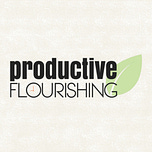Kathleen Kelly Janus is a social entrepreneur, author, and lecturer at Stanford University. She recently released her book called Social Startup Success. She joins Charlie today to discuss how nonprofits maximize their impact by adopting some of the same strategies that modern, for-profit organizations are using. They also touch on how the non-profit sector unintentionally reinforces the same inequities they’re attempting to solve.
Key Takeaways:
[1:30] – SaneBox is a great resource for managing your email inbox. See link below for more information!
[3:15] – Kathleen’s origin story: Kathleen grew up in a small town in California where she spent weekends volunteering and giving back to her community. Her parents instilled this virtue in her, but also spent time talking about the importance of the organizations caring for vulnerable communities, and whether they had the resources necessary to do so. Kathleen experienced this firsthand when she started her own nonprofit, Spark, but they capped out at $500,000 in revenue and they couldn’t get the capital that they needed to grow.
[5:00] – Kathleen started to research the top-performer organizations in the country to understand why some organizations succeed and manage to scale, and others don’t. This research culminated in her book, Social Startup Success. It highlights five basic strategies that successful organizations seemed to implement to get to their level of success.
[6:00] – Scale can mean different things to different people. For Kathleen in her book, scale is about getting to a level of sustainability, so organizations aren’t struggling to survive but are able to focus on their social impact. Charlie talks about the tension between scaling and sustainability: sometimes strategies used to scale can keep you from being sustainable, and on the other hand, some versions of sustainability prevent you from being able to scale.
[8:00] – One of the speed bumps people often encounter in starting and running nonprofits is the previously mentioned $500,000 revenue block, but there are others that come up as well. The five strategies Kathleen outlines in her book are the ones that target what organizations get the most tripped-up over. The strategies are innovation, impact, funding experimentation and fundraising, leading collaboratively, and storytelling.
[10:15] – In the business world, sometimes when an organization reaches a speed bump, they might have to change the nature of their organization in order to scale and grow. Nonprofits often experience these fundraising speed bumps, and different organizations will have to treat them differently depending on their scale. Kathleen talks about some of the steps to overcoming speed bumps as revenue increases. There is testing, or figuring out which revenue stream works best for your organization. As revenue increases, it’s about perfecting that strategy for scale. It’s important to be intentional about your strategy for scaling given the stage of your business so you choose a strategy that will allow you to continue great work without wasted time, effort, or heart (especially for nonprofits).
[15:10] – While strategies to grow can be learned, time is the enemy when it comes to some of the social issues many nonprofits are trying to solve. It is Kathleen’s hope that through Social Startup Success and capacity building, they can give organizations the tools they need to grow their business efficiently and effectively. Many nonprofits focus on serving the next generation (not necessarily adult customers), and it requires us to have a longer view, while at the same time taking action now.
[17:35] – A big part of Kathleen’s thesis is that many nonprofits are operating in an old-fashioned way, and they could modernize to maximize their impact. What Kathleen has noticed is that many organizations have been doing good work in the community for years, but have grown accustomed to that work and don’t think about gaining a fresh perspective. There have been improvements in technology that allow organizations to measure their impact better. Donors have also changed, and often want to do more than just cut a check. For nonprofits, it’s important to learn how to leverage your donors and get them more involved in the causes.
[20:20] – Charlie talks about how in the business sector, organizations must adapt or they die. A similar trend happens in the non-profit sector, but market forces don’t exist in the same way. There are a lot of factors that keep nonprofits afloat that maybe aren’t having the impact that they should have. If you are involved in a nonprofit, it’s important to really think about whether you’re having an impact or not. If not, maybe think about course correction that can get you back on track with the work you really want to be doing.
[21:05] – There seems to be a lack of willingness to be transparent in the non-profit sector, and this often prevents organizations from finding ways to improve. Funders don’t require this transparency, and then there is no incentive for organizations to be honest about what’s working and what’s not. To create better systems, you have to have that honesty. A level of transparency is also important for your donors as well, so they know where their money is going.
[24:25] – If you’re listening to this episode and aren’t involved in a non-profit organization, but still want to support a social cause you care about, there are other ways to get involved! There are so many channels for people to help make a difference these days. Many companies are integrating social change work and volunteer work into their everyday work.
[25:40] - You can also give back time and skills - it doesn’t always have to be monetary. Kathleen shares several examples of how you can donate professional skills. Think about what you’re passionate about and what you care about, and find organizations that are going to be the most effective. You might be spread thin across several organizations, but focusing on fewer at a deeper level might make more of a difference.
[29:30] - There are some organizations that aren’t getting funded, as well as organizations that are not involved in the non-profit sector that should be. Oftentimes we’re funding people from privileged backgrounds to start organizations at the expense of community-based leaders who are already connected to the communities they’re serving, but may not have the language to talk about their work or the resources. Ideally there would be philanthropic systems for giving out capital in ways that don’t just reward who has the most networks or biggest business plan, but who is making the most impact on an effective level. Racial and gender bias comes into play here too, with white-founded and male-founded organizations typically receiving more funding.
[34:00] - There should be a diversity of decision-making in the non-profit sector, and organizations also must be reflective of the communities they’re serving, or they’re not going to be effective. There are two levels of effectiveness: operationally effective and culturally effective. Philanthropic systems don’t always understand the extent to which they are reinforcing the very issues they’re trying to solve, and that’s where there needs to be more awareness.
[35:35] - Is there a difference between being involved and becoming an activist? We all have something to give in this world, and we all have the capacity to be activists for causes that we care about. If we can all think about how we can do our part to be activists, we can begin to solve problems.
[37:20] - There have been some different trends since the 60’s and 70’s, and one of the big ones is that social issues have been assigned to the government to fix. If you’re thinking about becoming an activist, think about how you can get involved in your community to solve your community’s problems. It doesn’t necessarily have to be on a larger scale to make a difference.
[38:55] - One of the things that surprised Kathleen most in her research is that from her interviews, she began to realize that we all have the ability to learn how to do our work better. It comes down to the fundamental strategies that all organizations have to implement in order to be more effective. Passion and charisma can only get you so far. It’s the people who get in there and do the work that are most effective. Collective leadership is also a key to being more effective.
[41:36] - Now that she’s out on the book trail, it’s been interesting for Kathleen to see what resonates with other people. The issue of bias seems to put people on the edge of their chairs.
[42:55] - Kathleen’s challenge for listeners is to get involved in a cause that you care about. It doesn’t matter what the cause is - if you get involved in something, you can have an impact in your community and together we can make the world a better place.
Mentioned in This Episode:
Social Startup Success, by Kathleen Janus












